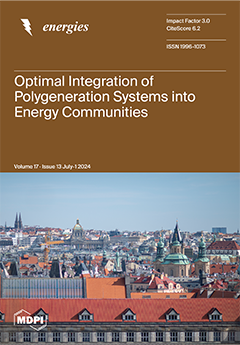The urgent need to find mitigating pathways for limiting world CO
2 emissions to net zero by 2050 has led to intense research on CO
2 sequestration in deep saline reservoirs. This paper reviews key advancements in lab- and simulation-scale research on petrophysical,
[...] Read more.
The urgent need to find mitigating pathways for limiting world CO
2 emissions to net zero by 2050 has led to intense research on CO
2 sequestration in deep saline reservoirs. This paper reviews key advancements in lab- and simulation-scale research on petrophysical, geochemical, and mineralogical changes during CO
2–brine–rock interactions performed in the last 25 years. It delves into CO
2 MPD (mineralization, precipitation, and dissolution) and explores alterations in petrophysical properties during core flooding and in static batch reactors. These properties include changes in wettability, CO
2 and brine interfacial tension, diffusion, dispersion, CO
2 storage capacity, and CO
2 leakage in caprock and sedimentary rocks under reservoir conditions. The injection of supercritical CO
2 into deep saline aquifers can lead to unforeseen geochemical and mineralogical changes, possibly jeopardizing the CCS (carbon capture and storage) process. There is a general lack of understanding of the reservoir’s interaction with the CO
2 phase at the pore/grain scale. This research addresses the gap in predicting the long-term changes of the CO
2–brine–rock interaction using various geochemical reactive transport simulators. Péclet and Damköhler numbers can contribute to a better understanding of geochemical interactions and reactive transport processes. Additionally, the dielectric constant requires further investigation, particularly for pre- and post-CO
2–brine–rock interactions. For comprehensive modeling of CO
2 storage over various timescales, the geochemical modeling software called the Geochemist’s Workbench was found to outperform others. Wettability alteration is another crucial aspect affecting CO
2–brine–rock interactions under varying temperature, pressure, and salinity conditions, which is essential for ensuring long-term CO
2 storage security and monitoring. Moreover, dual-energy CT scanning can provide deeper insights into geochemical interactions and their complexities.
Full article





